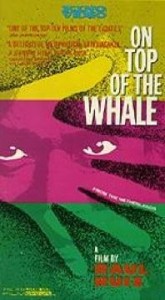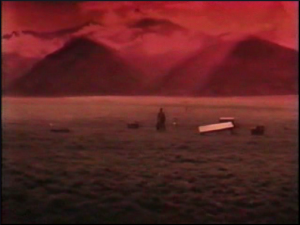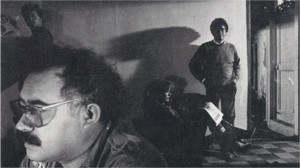From Rouge No. 2 (2004). — J.R.

|
The Roof of the Whale aka On Top of the Whale
(Hek dak van de Valvis/Le Toit de la baleine, Netherlands/France, 1981) |
|
|
|
|
|
|

|
|
The Roof of the Whale – the film of Ruiz’s with the most pronounced ideological/political/polemical thrust – deals brilliantly with the plight of an anthropologist trying to learn the language of an obscure Patagonian Indian tribe whose last surviving members he has discovered. Beautifully and inventively shot in colour by Henri Alekan, the film proceeds less as narrative or as drama than as a prodigious stream of visual, verbal and conceptual ideas centring around this theme. The performances are either minimal to the point of indifference or deliberately curtailed (so that, for instance, Willeke van Ammelrooy, who plays the anthropologist’s wife, appears to have learned her speeches in English phonetically) and, despite periodic bursts of portentous music, suspense exists only on a purely formal level. Two sample narrative ideas, neither of which lead anywhere in particular: in a weird parody of Lacanian psychoanalysis, the anthropologist’s child – a creature of indeterminate gender – becomes pregnant after gazing into a mirror; as an apparent gloss on this event, his or her mother remarks that poetry is dangerous because ‘metaphors become a religion, and religion is the opiate of the masses’. Two sample narrative ideas, neither of which lead anywhere in particular: in a weird parody of Lacanian psychoanalysis, the anthropologist’s child – a creature of indeterminate gender – becomes pregnant after gazing into a mirror; as an apparent gloss on this event, his or her mother remarks that poetry is dangerous because ‘metaphors become a religion, and religion is the opiate of the masses’. |
Read more